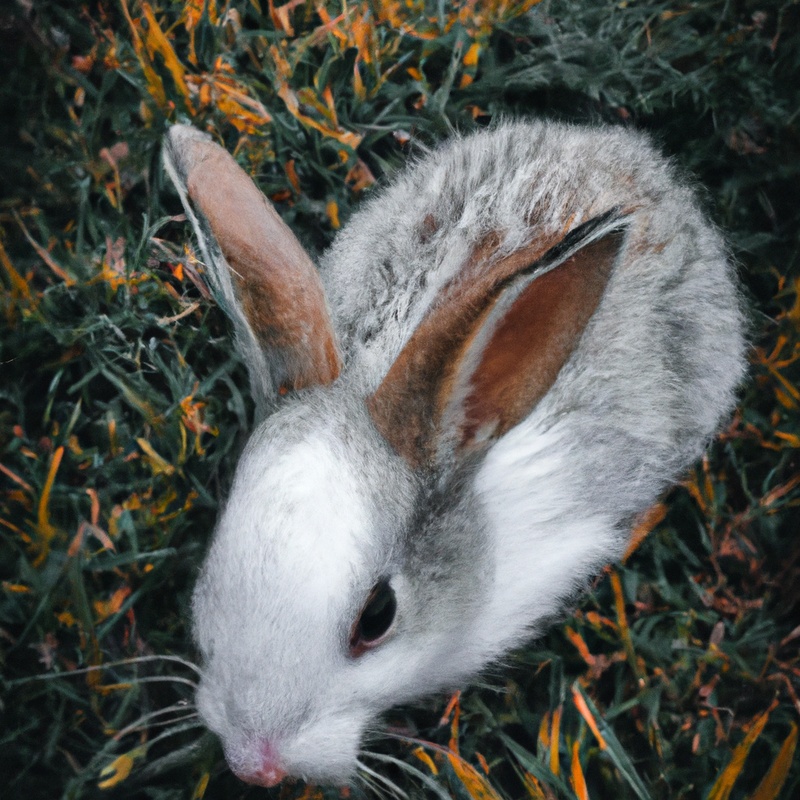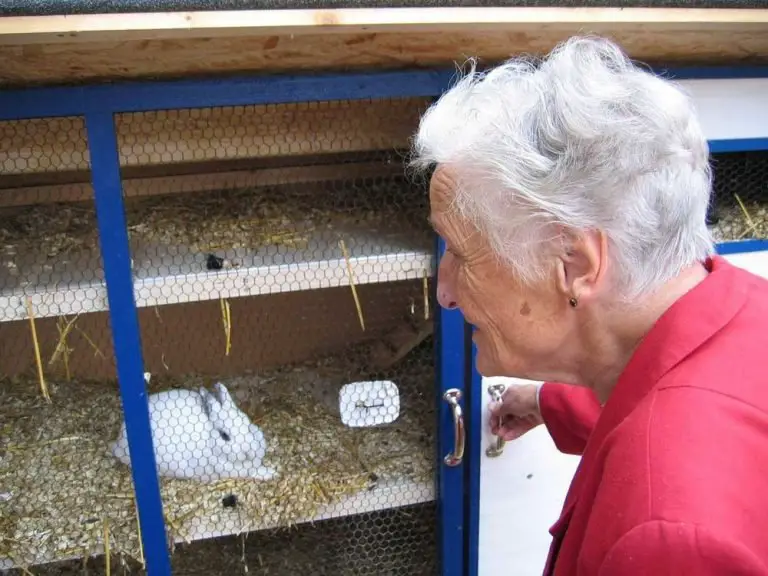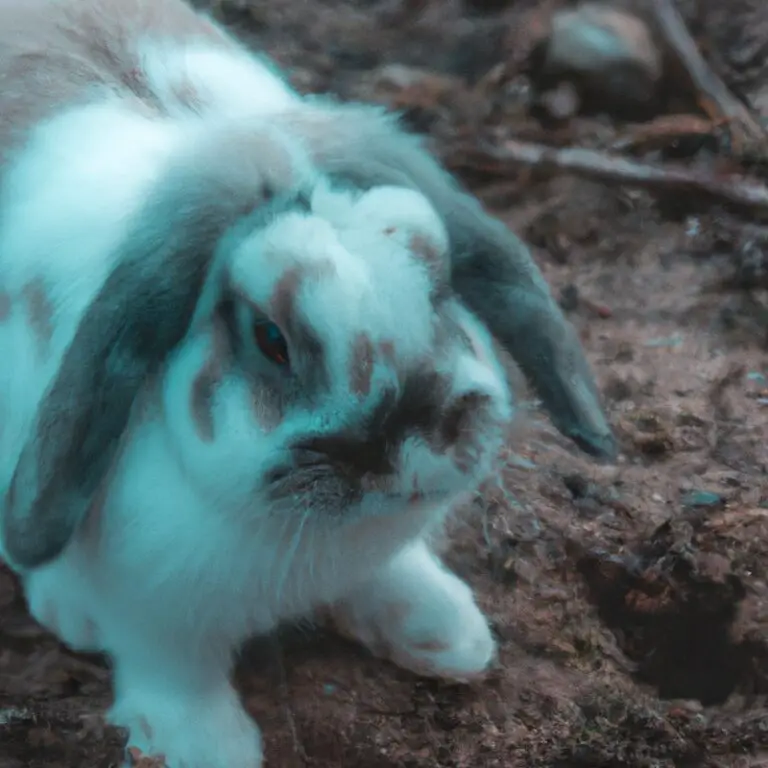Do Rabbits Like Being Held Like a Baby – The Cutest Cuddle Buddies Ever!
Key Takeaways:
- Rabbits generally do not enjoy being held like a baby.
- Rabbits prefer to have their feet on solid ground when being handled.
- Gentle petting and snuggling are more preferable to rabbits than being held in a cradled position.
- Every rabbit has its own preferences, so it’s important to observe their body language and respect their comfort levels when handling them.
Have you ever wondered if rabbits enjoy being cradled and held like a baby? It’s a common image we see in cartoons and movies, but do these furry creatures actually find it comfortable or stressful?
Understanding rabbit behavior and preferences is key to building a strong bond with your pet.
In this article, we’ll explore the natural behaviors of rabbits, their social interaction and communication, and how handling and physical contact factor into their comfort levels. Let’s dig deeper to discover if rabbits truly like being held like a baby, and if not, what alternative forms of interaction can strengthen your relationship with your fluffy friend.
| Pros | Cons | |
|---|---|---|
| Comfort | Some rabbits may find it comforting to be held like a baby and enjoy the close contact. | Other rabbits may feel stressed or uncomfortable when held in this manner. |
| Bonding | Holding a rabbit like a baby can help strengthen the bond between the rabbit and its owner. | Rabbits are prey animals by nature and may instinctively feel vulnerable and anxious in this position. |
| Experience | For some owners, holding a rabbit like a baby can be a delightful and enjoyable experience. | It may not be a pleasant experience for the rabbit if they do not like being held this way. |
Understanding Rabbit Behavior and Preferences
Rabbits have specific behaviors and preferences that are important to understand.
Natural Behaviors of Rabbits
Rabbits have a set of natural behaviors that help them survive and thrive in their environment. Some of these behaviors include digging, hopping, and grooming themselves.
They also have a keen sense of hearing and can quickly detect any potential threats.
Rabbits are social animals and enjoy the company of other rabbits. They also mark their territory by scent marking.
Understanding and respecting these natural behaviors is important for providing a suitable and enriching environment for pet rabbits.

Social Interaction and Communication
Social interaction and communication are key aspects of a rabbit’s behavior.
These cute little creatures have their own unique way of expressing themselves and understanding others.
They use a combination of body language, vocalizations, and even scent marking to communicate with their fellow rabbits and other animals.
It’s important to pay attention to their subtle cues, such as ear positioning, thumping their hind legs, or gentle nudges, to understand what they’re trying to convey.
Building a strong bond and using positive reinforcement can enhance your communication with your rabbit and make social interactions more enjoyable for both of you.

Handling and Physical Contact
Handling and Physical Contact Handling and physical contact with rabbits should be done with care and sensitivity.
Remember, rabbits are prey animals and can easily feel threatened or frightened.
When handling your rabbit, approach them calmly and gently.
Support their body with one hand under their chest and the other supporting their hindquarters.
Avoid squeezing or restraining them tightly, as this can cause stress.
It’s important to let your rabbit initiate physical contact, such as hopping onto your lap or snuggling up to you.
This allows them to feel safe and in control of their interactions.
Always be mindful of your rabbit’s body language, and if they show signs of discomfort or distress, give them space and respect their boundaries.
Rabbit Handling: Do They Like to Be Held?
Let’s explore whether rabbits enjoy being held or not.
Individual Preferences of Rabbits
Each rabbit has its own unique personality and preferences, so their preferences for being held or handled can vary. Some rabbits may enjoy being held and cuddled, while others may feel anxious or uncomfortable.
It’s important to respect their individual preferences and allow them to approach you for interaction.
Observing their body language can help you understand whether they are relaxed or not. Some rabbits may prefer interactive play or grooming sessions over being held.
Remember to provide a safe and enriching environment that allows your rabbit to make choices and feel secure.
Factors Affecting Comfort Levels for Rabbits
Rabbits are sensitive animals, and there are several factors that can affect their comfort levels.
One major factor is their environment.
Rabbits prefer a quiet and secure space where they can feel safe.
Another factor is their diet.
Providing them with a balanced diet that includes fresh hay, vegetables, and a small amount of pellets can help keep them happy.
Social interaction is also important.
Spending quality time with your rabbit by interacting and providing enrichment activities can contribute to their comfort.
Additionally, proper handling techniques play a big role.
Gently supporting their body and avoiding sudden movements can make them feel secure.
Signs of Discomfort or Stress in Rabbits
Rabbits show signs of discomfort or stress in various ways.
Look out for these indicators to ensure your furry friend is happy and healthy:
- Aggression or excessive biting/nipping: Rabbits may lash out if they feel threatened or stressed.
- Hiding or avoiding interaction: If your rabbit consistently hides or avoids being around you, it could be a sign of discomfort.
- Changes in eating or drinking habits: Loss of appetite or excessive thirst are red flags for stress.
- Abnormal or excessive grooming: Rabbits may over-groom themselves when feeling anxious or uncomfortable.
- Restlessness or excessive sleep: Watch for signs of restlessness or excessive sleep as these can indicate stress.
- Litter box issues: If your rabbit suddenly starts having accidents outside of their litter box, it may be due to stress.
- Excessive panting or rapid breathing: These can be signs of stress or an underlying health issue.
Monitoring these signs can help you identify and address any discomfort or stress your rabbit may be experiencing.

Alternatives to Holding Rabbits like a Baby
Instead of holding rabbits like a baby, explore other ways to interact with them.
Here are some alternatives to consider.
Exploring Different Types of Interaction
When it comes to interacting with rabbits, there are various types of interactions you can explore.
One option is to engage in playtime with toys specifically designed for rabbits, such as chew toys, tunnels, or mazes.
You can also try grooming your rabbit, which they often enjoy.
Another option is to provide mental stimulation through puzzle toys or hiding treats for them to find.
Additionally, spending time simply sitting near your rabbit and offering gentle strokes can help build trust and bond with them.
Overall, it’s important to observe your rabbit’s reactions and preferences to determine which types of interaction they enjoy the most.
Bonding with Your Rabbit through Grooming and Petting
Bonding with your rabbit can be achieved through regular grooming and petting sessions.
Taking the time to groom your rabbit helps you establish a physical connection and build trust.
Start by using a soft brush to gently stroke your rabbit’s fur, and gradually introduce petting sessions to help them relax and feel comfortable in your presence.
Remember to always handle your rabbit gently and respect their boundaries.
Regular grooming and petting will help strengthen your bond with your furry friend.
Engaging Rabbits in Playtime
Engaging rabbits in playtime is important for their physical and mental well-being.
Here are some ways you can play with your rabbit:
- Provide toys: Rabbits enjoy chewing and tossing toys. Offer a variety of safe toys, such as wooden blocks or balls made specifically for rabbits.
- Hide and seek: Conceal treats around their play area or in cardboard boxes. Rabbits love searching for goodies!
- Bunny-proofed rooms: Allow your rabbit to explore and hop around in a safe, bunny-proofed space. Remove any potential hazards.
- Interactive games: Try teaching your rabbit simple tricks or play gentle games like tug-of-war with a soft toy.
- Social time: Rabbits are social animals, so spending time with them is essential. Pet or groom them gently, and talk to them to create a bond.
Remember, each rabbit is unique, so observe your rabbit’s preferences and adjust playtime accordingly.
Building Trust and Strengthening the Human-Rabbit Bond
Building trust is key to strengthening the bond between you and your rabbit.
Understanding Body Language of Rabbits
Understanding the body language of rabbits is essential for building a strong bond with your furry friend.
Here are a few key signals to look out for:
- Ears: When your rabbit’s ears are relaxed and facing forward, it means they are content. If their ears are flattened or pushed back, they may be scared or angry.
- Tail: A relaxed and neutral tail position shows that your rabbit is calm. If their tail is raised and twitching, they might be excited or curious. A tucked tail may indicate fear or discomfort.
- Eyes: Wide-open eyes often mean your rabbit is alert and interested in their surroundings. Half-closed or squinting eyes could suggest relaxation or sleepiness.
- Posture: A comfortable rabbit will have a relaxed body posture, while a hunched or tense position may signal stress or illness.
Remember to observe your rabbit’s body language in different situations to better understand their needs and emotions.
Providing a Safe and Comfortable Environment
Creating a safe and comfortable environment for your rabbit is essential. Here are some tips to consider:
- Provide a spacious living area with enough room for your rabbit to move around and stretch.
- Make sure the area is rabbit-proofed, removing any potential hazards or toxic substances.
- Offer a cozy shelter or hiding place where your rabbit can retreat and feel secure.
- Maintain a consistent temperature, avoiding extreme heat or cold.
- Provide fresh water and a balanced diet to ensure your rabbit’s nutritional needs are met.
- Regularly clean and sanitize the living area to prevent the buildup of bacteria or odors.
- Spend time with your rabbit, providing mental stimulation and social interaction.
Remember, a safe and comfortable environment will contribute to your rabbit’s overall well-being and happiness.
Positive Reinforcement Training for Rabbits
Positive reinforcement training is an effective method for training rabbits. Through this approach, you can teach your rabbit desired behaviors by rewarding them with treats or praise when they exhibit the desired behavior.
Breaking down training into small steps and being patient is key.
Use treats that your rabbit loves and be consistent in your rewards. Remember to always remain calm and positive during training sessions.
Positive reinforcement can help create a strong bond and build trust between you and your rabbit.
Frequently Asked Questions about Holding Rabbits
Can all rabbits be held like a baby?
Not all rabbits enjoy being held like a baby.
While some rabbits may tolerate or even enjoy it, others may find it stressful or uncomfortable.
Each rabbit has its own personality and preferences, so it’s important to observe your rabbit’s body language and response to being held.
If your rabbit shows signs of distress, it’s best to refrain from holding them in that manner.
Instead, try finding alternative ways to bond and interact with your rabbit, such as gentle petting or playing games together.
How can I tell if my rabbit enjoys being held?
You can tell if your rabbit enjoys being held by paying attention to their body language and behavior.
If your rabbit feels comfortable and relaxed, they may close their eyes, flop their ears down, and purr.
They may also nuzzle you or groom themselves while being held.
On the other hand, if your rabbit is tense or trying to escape, they may display signs of distress like kicking, scratching, or biting.
It’s important to always handle your rabbit with care and respect their boundaries.
Are there any health risks associated with holding rabbits in a baby position?
Holding rabbits in a baby position can pose certain health risks. For instance, it can lead to spinal and back problems, as rabbits have delicate spines.
The pressure exerted from being held in this position can cause injury or discomfort.
Additionally, rabbits may feel anxious and stressed when restrained in this manner, which can affect their overall well-being. It’s important to handle rabbits with care and consider their comfort and safety when holding them.
Final Verdict
It’s important to understand that rabbits have individual preferences when it comes to handling and physical contact. While some rabbits may enjoy being held like a baby, many prefer alternative types of interaction that respect their natural behaviors and comfort levels.
Building a strong bond and trust with your rabbit involves understanding their body language, providing a safe and comfortable environment, and using positive reinforcement training.
By engaging in activities such as grooming, petting, and playtime, you can strengthen the human-rabbit bond without forcing them into uncomfortable positions. Remember, every rabbit is unique, so pay attention to their cues and always prioritize their well-being and happiness.







